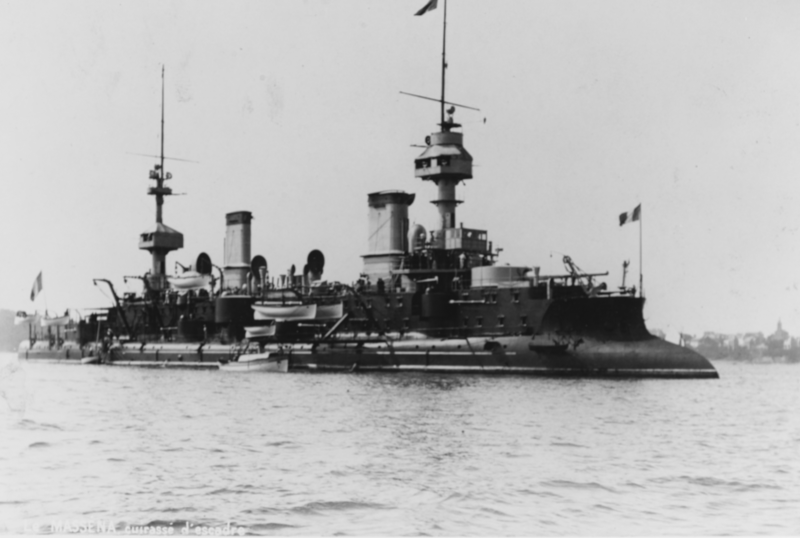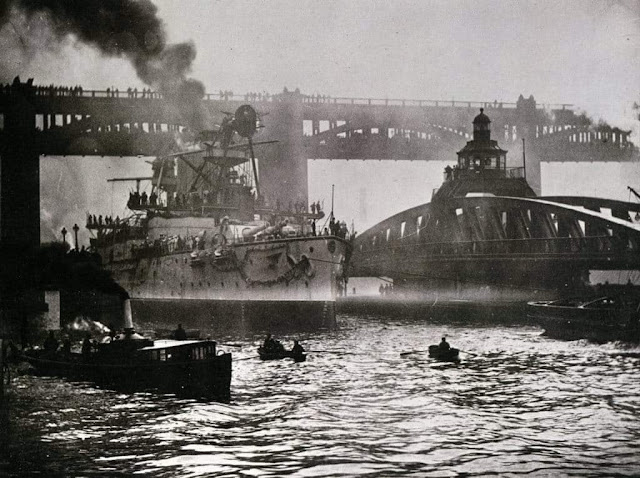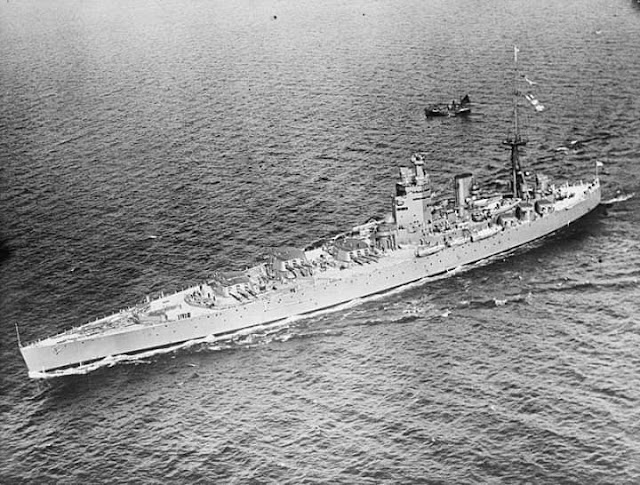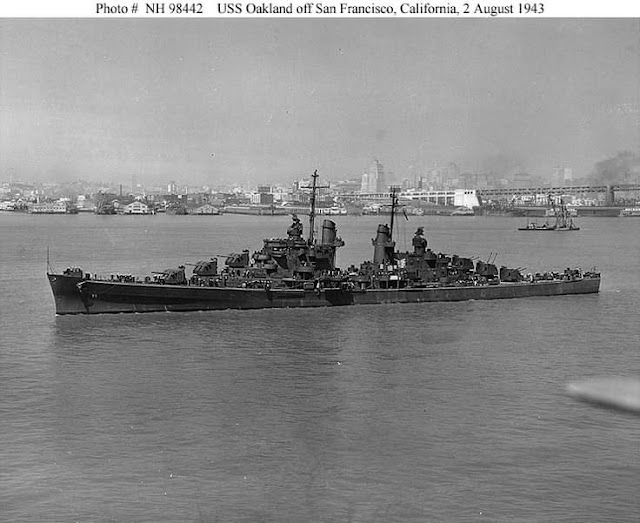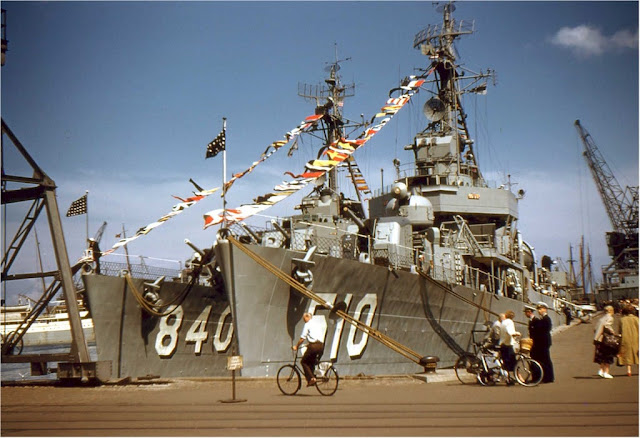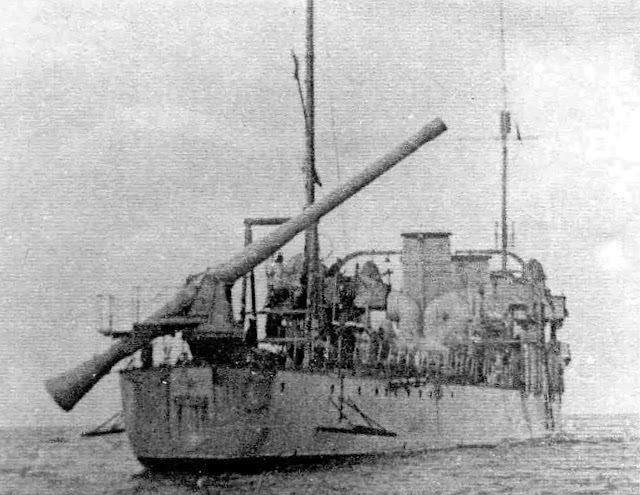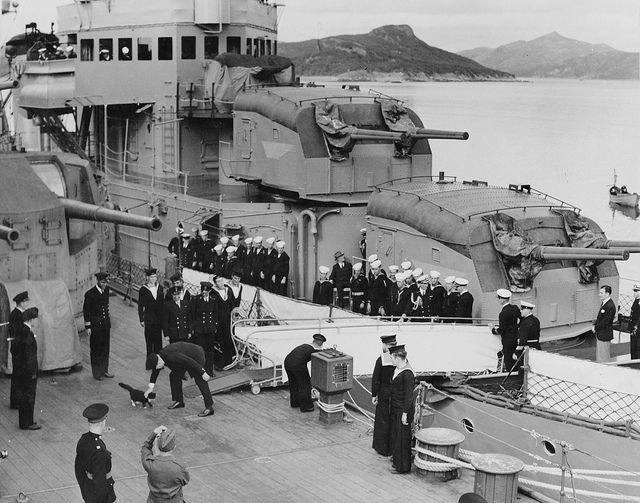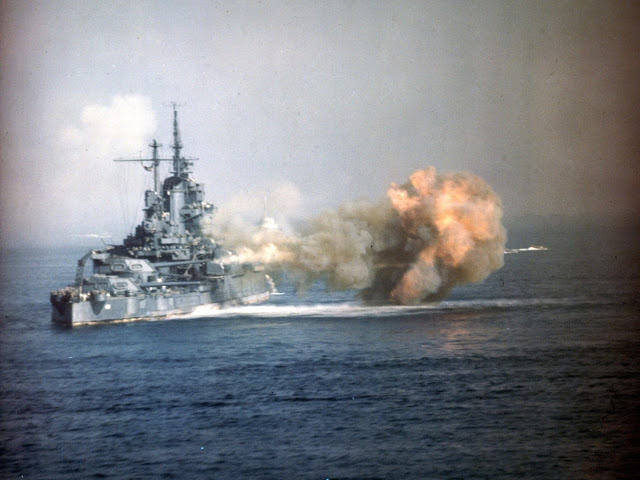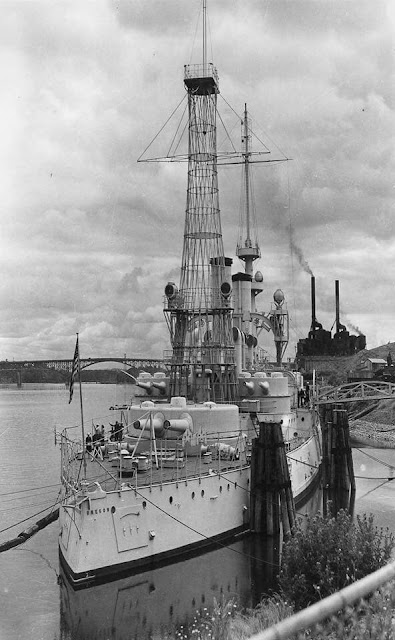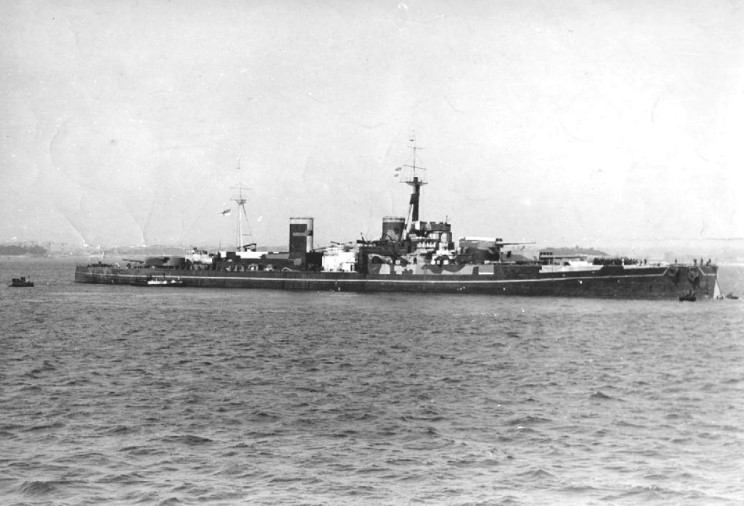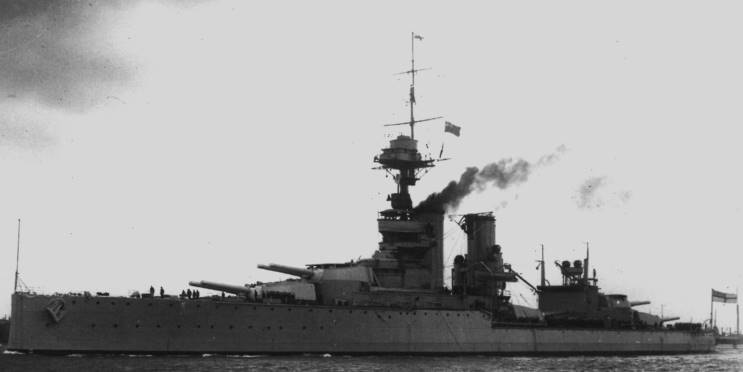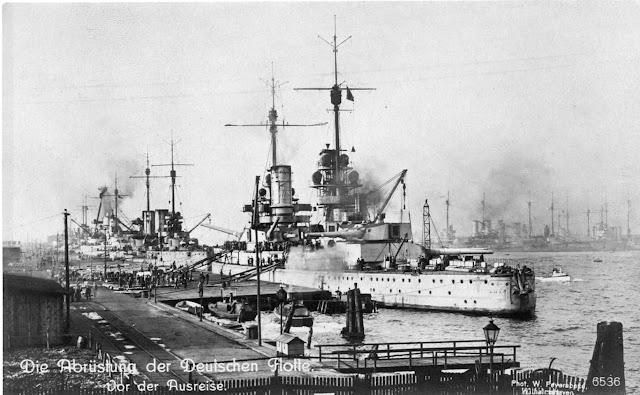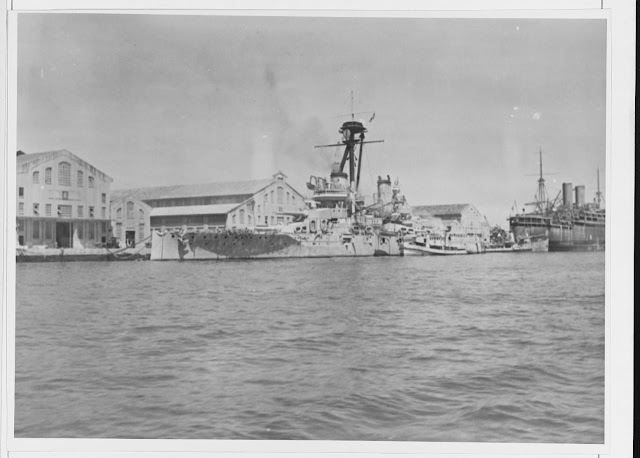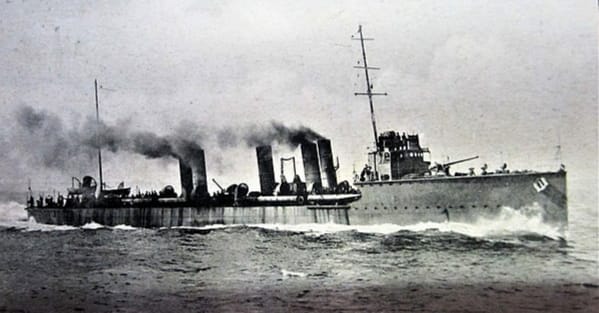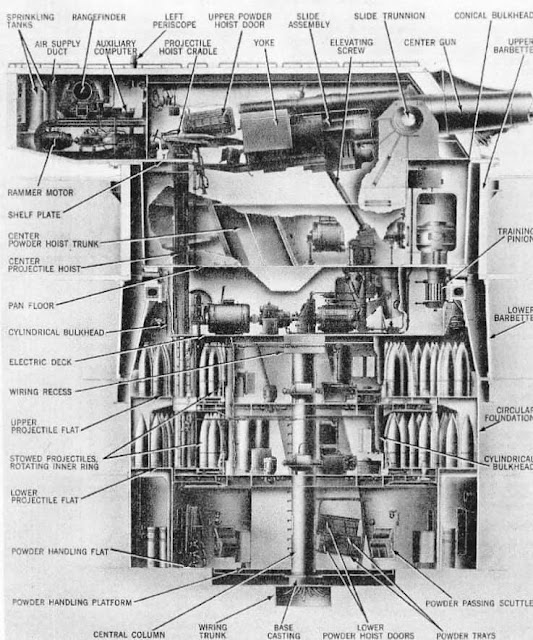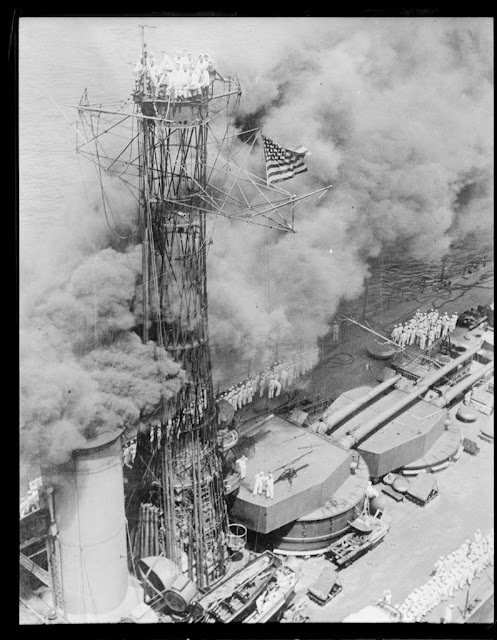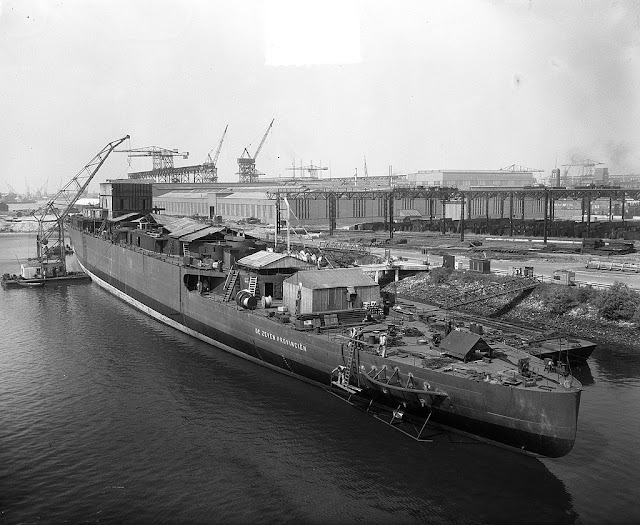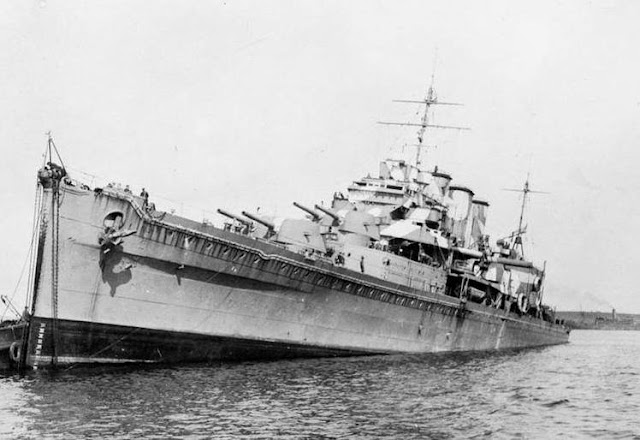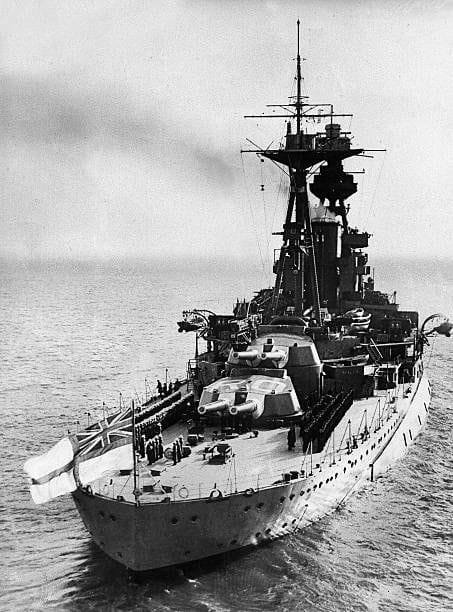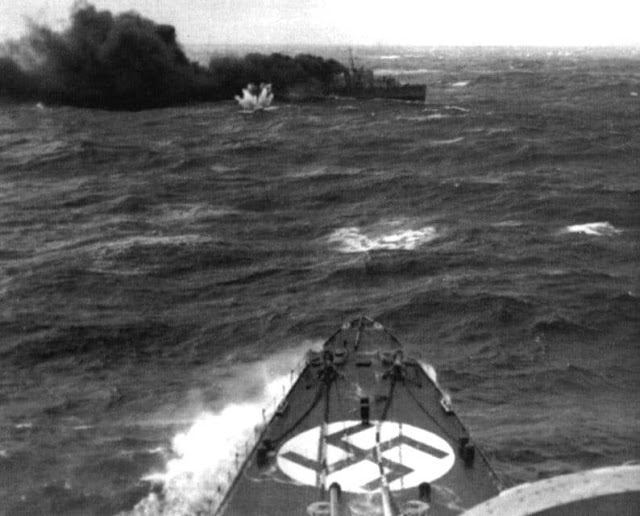
The Turret X Explosion of HMS Devonshire 1929
The 50 calibre BL 8 inch gun Mark VIII was the main battery gun used on the Royal Navy's County-class heavy cruisers, in compliance with the Washington Naval Treaty of 1922.
Similar to other cruisers of that era, the mountings for these weapons were given a high maximum elevation in order to provide an anti-aircraft capability. However, the training and elevation gear was inefficient and both the elevation and training rates were too slow to allow these mountings to be useful in that role.
The complex nature of the early versions of these mountings, the Mark I and Mark I*, gave trouble for a number of years. Considerable attention was paid to these faults, especially in 1927 and 1928, before these ships were accepted into service. After the initial trials, the training and elevation rates were reduced prior to commissioning and reduced still further during the 1930s in an effort to improve the operational performance of the turrets.
On 19th March 1929, 17 months after her launch, HMS Devonshire was commissioned into the Royal Navy and on 11th May, after carrying out trials at Portland, she sailed for Gibraltar. Before joining the First Cruiser Squadron of the Mediterranean Fleet Devonshire, together with her sister Sussex, underwent an eight-week work-up period at Gibraltar before, on 8th July, she finally steamed east to Malta, arriving in Grand Harbour three days later.
Eight days after arriving on station, Devonshire and the rest of the Mediterranean Fleet sailed for manoeuvres in the Aegean Sea, off the island of Skiathos. Controlling the exercises was the C-in-C in his Royal Oak flagship and also taking part were Queen Elizabeth London and Sussex, together with units of the Third Destroyer Flotilla. Arriving off Skiathos on 21st July the fleet lay at anchor, and while the senior officers planned the forthcoming manoeuvres the sailors were granted recreational leave for 'picnic and bathing parties'.
When they got underway Devonshire and the destroyers practised torpedo firing, after which there was gunnery practice. At 0800 on Friday 26th, July the fleet weighed anchor, and within minutes London, Sussex and Devonshire had formed single line ahead in order to carry out a full calibre shoot. At 08.45 there was a flurry of manoeuvring as Sussex, which was rejoining the line, almost collided with Devonshire; the latter’s stern did, in fact, touch Sussex's port quarter, but no damage was done and the exercise continued.
At 10.00 exactly Devonshire fired her first broadside, but practically simultaneously a huge explosion shook the ship. A faulty breech mechanism in 'X' turret had caused a shell and some cordite bags to ignite, and the force of the explosion blew the roof off the gun turret and started fires in the gun house and pump room. Fortunately, these were soon extinguished, but the explosion took a heavy toll of the Royal Marines who were manning the turret.
One officer and six men were killed instantly, one of them being blown overboard. Devonshire, meanwhile, made for the Greek port of Volos where 17 injured men were transferred to the hospital ship Maine. However, 11 of these subsequently died and 16 of the victims were buried at Volos with full military honours. Devonshire, with the guns of 'X' turret awry, returned to Malta and from there proceeded to Devonport where, on 14th August 1929, her tragic first commission ended.
As a result of this incident, a new interlock was fitted, which prevented the operator from opening the breach until it had been tripped by the gun firing or manually reset by another operator inside the turret.
Most of the problems seem to have been satisfactorily resolved prior to the start of World War II, but HMS London reported as late as June 1938 that "one would wish that the 8in mountings and torpedoes would behave as they should. The prolonged firing of 20 rounds per gun from London was a disappointment on the material side."
The later Mark II mountings appear to have been much more reliable, with the first gun trials for HMS York in February 1930 being so successful that they took only four hours to complete. As a weight-saving measure, the Mark II* version of this mounting, used only on HMS Exeter, had a significantly reduced maximum elevation.
The original design was A tube, wire, B tube, overlapping jacket, breech ring and breech-bush and these guns were designated as Mark VIII* upon completion. Owing to troubles with the A tube forging, an inner A tube was added to half of the wire-wound guns. After relining with a tapered inner A tube, guns were then designated as Mark VIII. Two prototypes and the last 26 guns built did not use wire and were designated as Mark VIII**. All guns used a Welin breech-block with hydraulic or hand-worked Asbury mechanism and were interchangeable with each other. A total of 168 guns were produced, including the two prototypes built without wire.
The original Naval Staff requirement for these weapons was 12 rounds per minute, an impossibly high figure for the time. The requirement was ultimately reduced to six rounds per minute. However, "British Cruisers of World War Two" states that this rate was never reached during wartime service and that the maximum sustained ROF in action was actually 3 to 4 rounds per minute. During trials, HMS Kent did achieve a ROF of 5 rounds per minute for a brief time.
Australia, Devonshire and Sussex had "X" turret removed during the war as weight compensation for additional light AA, radar and other electronic equipment.
HMS Devonshire Turret Explosion Casualties:
Marine Fatalities
Captain John Arthur Bath D.S.C.† Killed Outright
Sergeant William Ernest Snell¤ Missing presumed drowned
Corporal Edward Bacon † Killed outright
Corporal Joseph E. Barber† Died on board Hospital Ship HMS Maine
Corporal James Levins † Killed Outright
Marine James W. Blackman † Died on board HMS Maine
Marine Joseph S. Brindle † Died on board HMS Maine
Marine Samuel Goldsmith † Died on board HMS Maine
Marine Frank Grindle † Died on board HMS Maine
Marine Edward C. Harris † Died on board HMS Maine
Marine William Ernest Hellyer‡ Died on board HMS Maine
Marine William George Hole† Died on board HMS Devonshire
Marine Augustus Alexander MacDonald† Died on board HMS Devonshire
Marine John Tossel Old † Died on board HMS Maine
Marine Lionel R. Taylor † Died on board HMS Maine
Marine Frank Williams † Died on board HMS Maine
Sgt. Snell’s body was never recovered, despite HMS Sussex and HMS Frobisher searching the area for the rest of the day.
Fatality -Royal Navy
Ordnance Artificer Arthur C. Edwards † Died on board HMS Maine
Injuries - Royal Marines
Corporal L.E. Elliott Hospitalised on HMS Devonshire
Corporal G.C. Pengelly Hospitalised on HMS Devonshire
Acting Corporal Charles Percival Wickenden ± Hospitalised on HMS Maine
Marine T. Agar Hospitalised on HMS Devonshire
Marine A. Brimblecombe Hospitalised on HMS Maine
Marine F. Chalice Hospitalised on HMS Devonshire
Marine W.J. Elliott Hospitalised on HMS Devonshire
Marine J. Hallam Hospitalised on HMS Maine
Marine G.H. Harkcom Hospitalised on HMS Maine
Marine E.F. Hymen Hospitalised on HMS Maine
Marine W. Smith Hospitalised on HMS Devonshire
Marine Albert Edward Streams° Hospitalised on HMS Devonshire
Injuries - Royal Navy
Chief Petty Officer R.E. Jenns Hospitalised on HMS Devonshire
L/S/A W.G. Eason Hospitalised on HMS Devonshire
Able Seaman A.E. Haley Hospitalised on HMS Devonshire
Able Seaman [?].J. Smith Hospitalised on HMS Maine
O/S O.C. Mason Hospitalised on HMS Devonshire
References:
http://www.roll-of-honour.com/Ships/HMSDevonshire.html
https://www.royalnavymemories.co.uk/turret-explosion/
http://www.navweaps.com/Weapons/WNBR_8-50_mk8.php
